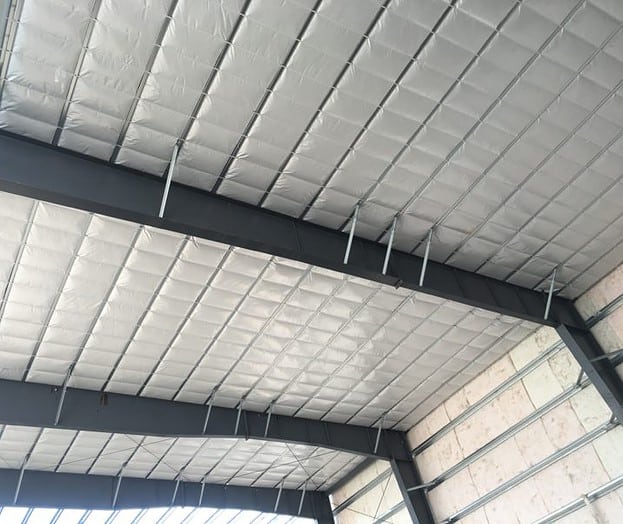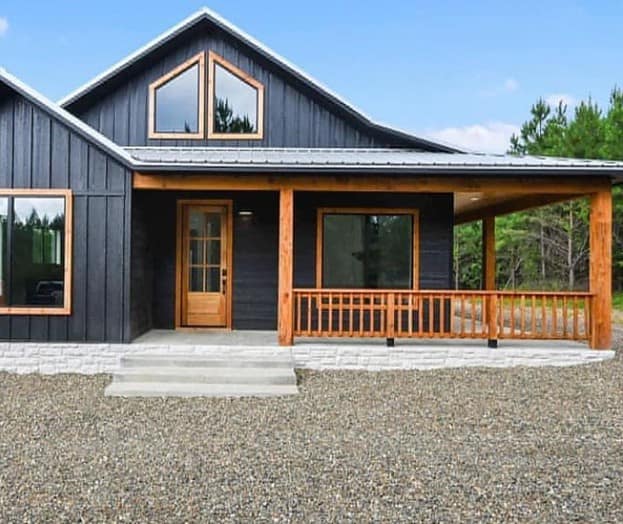Embark on your residential metal building project with confidence as we guide you through the key factors that influence prices, empowering you to make informed decisions and achieve a cost-effective outcome.
When it comes to residential metal building prices, several key factors come into play. Factors such as building size, design complexity, choice of materials, location, site preparation, customization options, roof style, energy efficiency, building codes, and market conditions all influence the overall cost.
To gain a comprehensive understanding of how these factors impact pricing and to discover valuable insights for managing your budget effectively, continue reading our in-depth guide below.
1. Building Size
One of the primary determinants of the cost of a residential metal building is its size. The larger the building, the more materials and labor will be required, resulting in higher expenses. Additionally, larger buildings may require more complex engineering and structural considerations, further impacting the overall price.
2. Design Complexity

The complexity of the design plays a significant role in determining the cost of a residential metal building. Intricate designs with unique architectural features or complex floor plans can require additional engineering expertise and customization, leading to increased expenses. On the other hand, simpler designs with standard configurations are generally more cost-effective.
3. Building Materials
The choice of building materials also affects the overall cost of a residential metal building. Different types of metals, such as steel or aluminum, come with varying price points. Additionally, the quality and grade of the metal can impact the final price. It’s important to select materials that align with your budget while still meeting your desired level of durability and aesthetics.
4. Location
The geographic location of your residential metal building project can have cost implications. Factors such as local building codes, permits, and inspections can vary from one area to another, leading to differences in construction costs. Additionally, transportation expenses for materials and labor can vary depending on the distance to the construction site.
5. Site Preparation
Preparing the site for the construction of a residential metal building is an essential step that can influence the overall cost. Factors such as land leveling, excavation, and soil conditions can impact the amount of work and resources required. Complex site preparation tasks may result in higher expenses, so it’s crucial to assess the site thoroughly beforehand.
6. Customization Options
The level of customization you desire for your residential metal building can also affect the price. Custom features, such as windows, doors, insulation, and additional amenities, will add to the overall cost. It’s important to carefully consider your needs and priorities to strike the right balance between customization and budget.
7. Roof Style
The roof style you choose for your residential metal building can impact both the aesthetics and the cost. Different roof types, such as gable, gambrel, or hip, come with varying complexities and materials requirements. Some roof styles may require additional support structures or have a steeper pitch, resulting in increased costs.
8. Energy Efficiency

Incorporating energy-efficient features into your residential metal building can have long-term cost benefits. While energy-efficient options may require a higher upfront investment, they can lead to significant savings in utility bills over time. Consider features such as insulation, reflective coatings, and efficient HVAC systems to enhance energy efficiency and reduce operating expenses.
9. Building Codes and Regulations
Compliance with local building codes and regulations is essential for any construction project, including residential metal buildings. Costs associated with permits, inspections, and adherence to specific requirements can vary depending on the jurisdiction. It’s crucial to consult with local authorities and ensure that your project meets all necessary codes and regulations.
10. Market Conditions
Market conditions, including supply and demand dynamics, can influence residential metal building prices. Fluctuations in raw material costs, labor availability, and economic factors can impact the overall expenses. Staying informed about market trends and timing your project accordingly can help you make cost-effective decisions.
Conclusion
Constructing a residential metal building requires careful consideration of various factors that influence the pricing. By understanding these elements, you can effectively plan your project, manage your budget, and ensure a successful outcome. The size, design complexity, building materials, location, site preparation, customization options, roof style, energy efficiency, building codes, and market conditions all play significant roles in determining the overall cost.
When embarking on a residential metal building project, it is essential to assess your needs, prioritize your requirements, and strike a balance between customization and budget. Consulting with experienced professionals in the industry can provide valuable guidance and help you navigate through the complexities involved.
Remember, each project is unique, and there are no one-size-fits-all solutions. Take the time to research, plan, and make informed decisions that align with your goals and financial capabilities. With proper attention to detail and careful consideration of the factors discussed in this article, you can successfully manage the cost of your residential metal building construction.
Frequently Asked Questions
1. How long does it take to construct a residential metal building?
The duration of construction for a residential metal building such as the size and complexity of the building, site conditions, and weather. On average, the construction process can take anywhere from a few weeks to several months.
2. Are residential metal buildings more expensive than traditional construction?
The cost of residential metal buildings can vary, but in many cases, they can be a cost-effective alternative to traditional construction methods. Metal buildings often require less time and labor to construct, resulting in potential cost savings. Additionally, the durability and low maintenance requirements of metal structures can lead to long-term cost benefits.
3. Can residential metal buildings be customized to my preferences?
Yes, residential metal buildings offer a high level of customization. You can choose from various design options, including different roof styles, wall panels, doors, windows, and interior finishes. Discuss your preferences with the building manufacturer or contractor to explore the available customization options.
4. Are residential metal buildings energy-efficient?
Residential metal buildings can be designed to be energy-efficient. Incorporating features such as insulation, reflective coatings, energy-efficient windows, and HVAC systems can enhance the energy performance of your metal building. Consult with professionals who specialize in energy-efficient design to optimize the energy efficiency of your residential metal building.
5. What are the maintenance requirements for residential metal buildings?
Metal buildings are known for their durability and low maintenance requirements. Regular inspections for any signs of corrosion or damage, cleaning the exterior surfaces, and ensuring proper drainage are important maintenance practices. Additionally, maintaining the integrity of seals and weatherstripping can help prevent water infiltration and improve energy efficiency.


